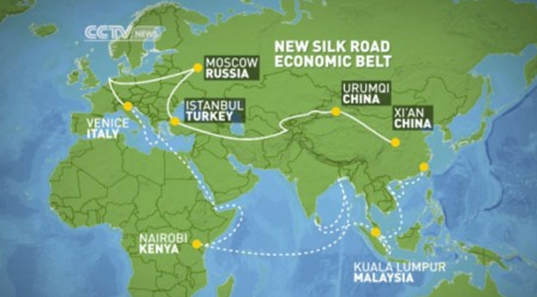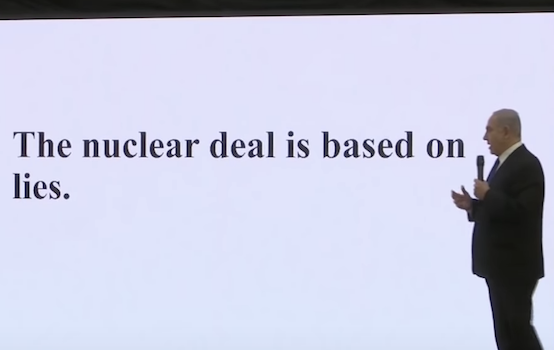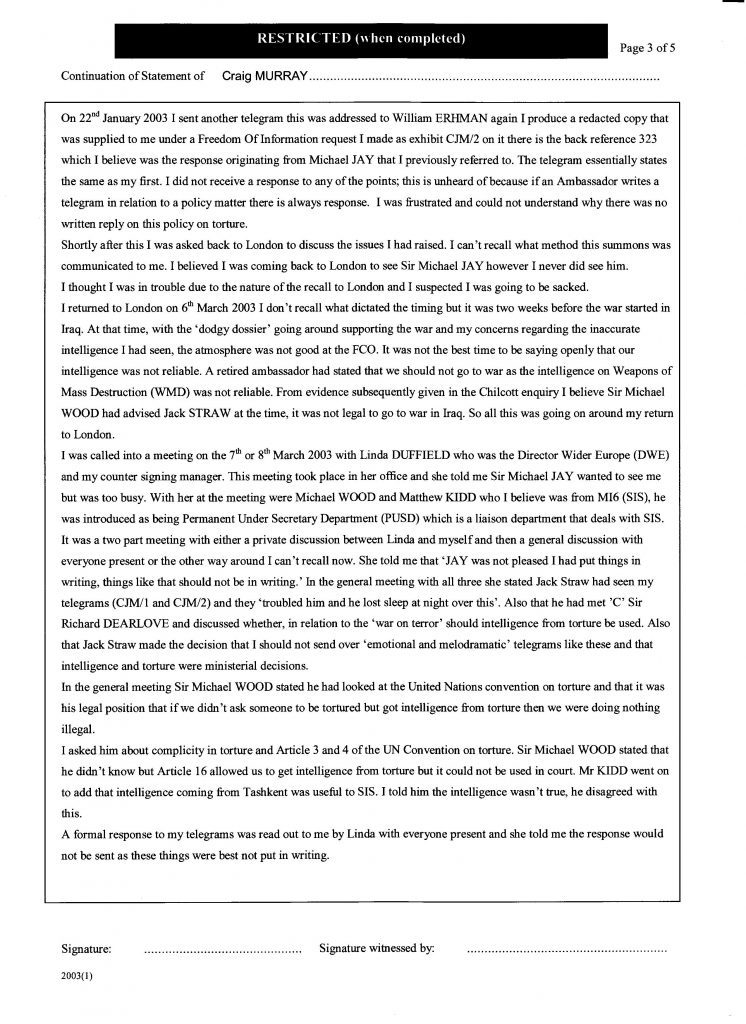Volumes II and III of Marx’s Capital describe how debt grows exponentially, burdening the economy with carrying charges. This overhead is subjecting today’s Western finance-capitalist economies to austerity, shrinking living standards and capital investment while increasing their cost of living and doing business. That is the main reason why they are losing their export markets and becoming de-industrialized.
What policies are best suited for China to avoid this neo-rentier disease while raising living standards in a fair and efficient low-cost economy? The most pressing policy challenge is to keep down the cost of housing. Rising housing prices mean larger and larger debts extracting interest out of the economy. The strongest way to prevent this is to tax away the rise in land prices, collecting the rental value for the government instead of letting it be pledged to the banks as mortgage interest.
The same logic applies to public collection of natural resource and monopoly rents. Failure to tax them away will enable banks to create debt against these rents, building financial and other rentier charges into the pricing of basic needs.
U.S. and European business schools are part of the problem, not part of the solution. They teach the tactics of asset stripping and how to replace industrial engineering with financial engineering, as if financialization creates wealth faster than the debt burden. Having rapidly pulled ahead over the past three decades, China must remain free of rentier ideology that imagines wealth to be created by debt-leveraged inflation of real-estate and financial asset prices.

Western capitalism has not turned out the way that Marx expected. He was optimistic in forecasting that industrial capitalists would gain control of government to free economies from unnecessary costs of production in the form of rent and interest that increase the cost of living (and hence, the break-even wage level). Along with most other economists of his day, he expected rentier income and the ownership of land, natural resources and banking to be taken out of the hands of the hereditary aristocracies that had held them since Europe’s feudal epoch. Socialism was seen as the logical extension of classical political economy, whose main policy was to abolish rent paid to landlords and interest paid to banks and bondholders.
A century ago there was an almost universal belief in mixed economies. Governments were expected to tax away land rent and natural resource rent, regulate monopolies to bring prices in line with actual cost value, and create basic infrastructure with money created by their own treasury or central bank. Socializing land rent was the core of Physiocracy and the economics of Adam Smith, whose logic was refined by Alfred Marshall, Simon Patten and other bourgeois economists of the late 19th century. That was the path that European and American capitalism seemed to be following in the decades leading up to World War I. That logic sought to use the government to support industry instead of the landlord and financial classes.
China is progressing along this “mixed economy” road to socialism, but Western economies are suffering from a resurgence of the pre-capitalist rentier classes. Their slogan of “small government” means a shift in planning to finance, real estate and monopolies. This economic philosophy is reversing the logic of industrial capitalism, replacing public investment and subsidy with privatization and rent extraction. The Western economies’ tax shift favoring finance and real estate is a case in point. It reverses John Stuart Mill’s “Ricardian socialism” based on public collection of the land’s rental value and the “unearned increment” of rising land prices.
Defining economic rent as the unnecessary margin of prices over intrinsic cost value, classical economists through Marx described rentiers as being economically parasitic, not productive. Rentiers do not “earn” their land rent, interest or monopoly rent, because it has no basis in real cost-value (ultimately reducible to labor costs). The political, fiscal and regulatory reforms that followed from this value and rent theory were an important factor leading to Marx’s value theory and historical materialism. The political thrust of this theory explains why it is no longer being taught.
By the late 19th century the rentiers fought back, sponsoring reaction against the socialist implications of classical value and rent theory. In America, John Bates Clark denied that economic rent was unearned. He redefined it as payment for the landlords’ labor and enterprise, not as accruing “in their sleep,” as J. S. Mill had characterized it. Interest was depicted as payment for the “service” of lending productively, not as exploitation. Everyone’s income and wealth was held to represent payment for their contribution to production. The thrust of this approach was epitomized by Milton Friedman’s Chicago School claim that “there is no such thing as a free lunch” – in contrast to classical economics saying that feudalism’s legacy of privatized land ownership, bank credit and monopolies was all about how to get a free lunch, by exploitation.
The other major reaction against classical and Marxist theory was English and Austrian “utility” theory. Focusing on consumer psychology instead of production costs, it claimed that there is no difference between value and price. A price is whatever consumers “choose” to pay for commodities, based on the “utility” that these provide – defined by circular reasoning as being equal to the price they pay. Producers are assumed to invest and produce goods to “satisfy consumer demand,” as if consumers are the driving force of economies, not capitalists, property owners or financial managers.
Using junk-psychology, interest was portrayed as what bankers or bondholders “abstain” from consuming, lending their self-denial of spending to “impatient” consumers and “credit-worthy” entrepreneurs. This view opposed the idea of interest as a predatory charge levied by hereditary wealth and the privatized monopoly right to create bank credit. Marx quipped that in this view, the Rothschilds must be Europe’s most self-depriving and abstaining family, not as suffering from wealth-addiction.
These theories that all income is earned and that consumers (the bourgeois term for wage-earners) instead of capitalists determine economic policy were a reaction against the classical value and rent theory that paved the way for Marx’s analysis. After analyzing industrial business cycles in terms of under-consumption or over-production in Volume I of Capital, Volume III dealt with the precapitalist financial problem inherited from feudalism and the earlier “ancient” mode of production: the tendency of an economy’s debts to grow by the “purely mathematical law” of compound interest.
Any rate of interest may be thought of as a doubling time. What doubles is not real growth, but the parasitic financial burden on this growth. The more the debt burden grows, the less income is left for spending on goods and services. More than any of his contemporaries, Marx emphasized the tendency for debt to grow exponentially, at compound interest, extracting more and more income from the economy at large as debts double and redouble, beyond the ability of debtors to pay. This slows investment in new means of production, because it shrinks domestic markets for output.
Marx explained that the credit system is external to the means of production. It existed in ancient times, feudal Europe, and has survived industrial capitalism to exist even in socialist economies. At issue in all these economic systems is how to prevent the growth of debt and its interest charge from shrinking economies. Marx believed that the natural thrust of industrial capitalism was to replace private banking and money creation with public money and credit. He distinguished interest-bearing debt under industrial capitalism as, for the first time, a means of financing capital investment. It thus was potentially productive by funding capital to produce a profit that was sufficient to pay off the debt.
Industrial banking was expected to finance industrial capital formation, as was occurring in Germany in Marx’s day. Marx’s examples of industrial balance sheets accordingly assumed debt. In contrast to Ricardo’s analysis of capitalism’s Armageddon resulting from rising land-rent, Marx expected capitalism to free itself from political dominance by the landlord class, as well as from the precapitalist legacy of usury.
This kind of classical free market viewed capitalism’s historical role as being to free the economy from the overhead of unproductive “usury” debt, along with the problem of absentee landownership and private ownership of monopolies – what Lenin called the economy’s “commanding heights” in the form of basic infrastructure. Governments would make industries competitive by providing basic needs freely or at least at much lower public prices than privatized economies could match.
This reform program of industrial capitalism was beginning to occur in Germany and the United States, but Marx recognized that such evolution would not be smooth and automatic. Managing economies in the interest of the wage earners who formed the majority of the population would require revolution where reactionary interests fought to prevent society from going beyond the “bourgeois socialism” that stopped short of nationalizing the land, monopolies and banking.
World War I untracked even this path of “bourgeois socialism.” Rentier forces fought to prevent reform, and banks focused on lending against collateral already in place, not on financing new means of production. The result of this return to pre-industrial bank credit is that some 80 percent of bank lending in the United States and Britain now takes the form of real estate mortgages. The effect is to turn the land’s rental yield into interest.
That rent-into-interest transformation gives bankers a strong motive to oppose taxing land rent, knowing that they will end up with whatever the tax collector relinquishes. Most of the remaining bank lending is concentrated in loans for corporate takeovers, mergers and acquisitions, and consumer loans. Corporate capital investment in today’s West is not financed by bank credit, but almost entirely out of retained corporate earnings, and secondarily out of stock issues.
The stock market itself has become extractive. Corporate earnings are used for stock buybacks and higher dividend payouts, not for new tangible investment. This financial strategy was made explicit by Harvard Business School Professor Michael Jensen, who advocated that salaries and bonuses for corporate managers should be based on how much they can increase the price of their companies’ stock, not on how much they increased or production and/or business size. Some 92 percent of corporate profits in recent years have been spent on stock buyback programs and dividend payouts. That leaves only about 8 percent available to be re-invested in new means of production and hiring. Corporate America’s financial managers are turning financialized companies into debt-ridden corporate shells.
A major advantage of a government as chief banker and credit creator is that when debts come to outstrip the means to pay, the government can write down the debt. That is how China’s banks have operated. It is a prerequisite for saving companies from bankruptcy and preventing their ownership from being transferred to foreigners, raiders or vultures.
Classical tax and banking policies were expected to streamline industrial economies, lowering their cost structures as governments replaced landlords as owner of the land and natural resources (as in China today) and creating their own money and credit. But despite Marx’s understanding that this would have been the most logical way for industrial capitalism to evolve, finance capitalism has failed to fund capital formation. Finance capitalism has hijacked industrial capitalism, and neoliberalism is its anti-classical ideology.
The result of today’s alliance of the Finance, Insurance and Real Estate (FIRE) sector with natural resource and infrastructure monopolies has been to reverse that the 20th century’s reforms promoting progressive taxation of wealth and income. Industrial capitalism in the West has been detoured along the road to rent-extracting privatization, austerity and debt serfdom.
The result is a double-crisis: austerity stemming from debt deflation, while public health, communications, information technology, transportation and other basic infrastructure are privatized by corporate monopolies that raise prices charged to labor and industry. The debt crisis spans government debt (state and local as well as national), corporate debt, real estate mortgage debt and personal debt, causing austerity that shrinks the “real” economy as its assets and income are stripped away to service the exponentially growing debt overhead. The economy polarizes as income and wealth ownership are shifted to the neo-rentier alliance headed by the financial sector.
This veritable counter-revolution has inverted the classical concept of free markets. Instead of advocating a public role to lower the cost structure of business and labor, the neoliberal ideal excludes public infrastructure and government ownership of natural monopolies, not to speak of industrial production. Led by bank lobbyists, neoliberalism even opposes public regulation of finance and monopolies to keep their prices in line with socially necessary cost of production.
To defend this economic counter-revolution, the National Income and Product Accounts (NIPA) and Gross Domestic Product (GDP) measures now used throughout the world were inspired by opposition to progressive taxation and public ownership of land and banks. These statistical measures depicting finance, insurance and real estate as the leaders of wealth creation, not the creators merely of debt and rentier overhead.
What is China’s “Real” GDP and “real wealth creation”?

Rejection of classical value theory’s focus on economic rent – the excess of market price over intrinsic labor cost – underlies the post-classical concept of GDP. Classical rent theory warned against the FIRE sector siphoning off nominal growth in wealth and income. The economics of Adam Smith, David Ricardo, J.S. Mill and Marx share in common the view that this rentier revenue should be treated as an overhead charge and, as such, subtracted from national income and product because it is not production-related. Being extraneous to the production process, this rentier overhead is responsible for today’s debt deflation and economically extractive privatization that is imposing austerity and shrinking markets from North America to Europe.
The West’s debt crisis is aggravated by privatizing monopolies (on credit) that historically have belonged to the public sector. Instead of recognizing the virtues of a mixed economy, Frederick Hayek and his followers from Ayn Rand to Margaret Thatcher, Ronald Reagan, the Chicago School and libertarian Republicans have claimed that any public ownership or regulation is, ipso facto, a step toward totalitarian politics.
Following this ideology, Alan Greenspan aborted economic regulation and decriminalized financial fraud. He believed that in principle, the massive bank fraud, junk-mortgage lending and corporate raiding that led up to the 2008 crisis was more efficient than regulating such activities or prosecuting fraudsters.
This is the neoliberal ideology taught in U.S. and European business schools. It assumes that whatever increases financial wealth most quickly is the most efficient for society as a whole. It also assumes that bankers will find honest dealing to be more in their economic self-interest than fraud, because customers would shun fraudulent bankers. But along with the mathematics of compound interest, the inherent dynamic of finance capitalism is to establish a monopoly and capture government regulatory agencies, the justice system, central bank and Treasury to prevent any alternative policy and the prosecution of fraud.
The aim is to get rich by purely financial means – by increasing stock-market prices, not by tangible capital formation. That is the opposite of the industrial logic of expanding the economy and its markets. Instead of creating a more productive economy and raising living standards, finance capitalism is imposing austerity by diverting wage income and also corporate income to pay rising debt service, health insurance and payments to privatized monopolies. Progressive income and wealth taxation has been reversed, siphoning off wages to subsidize privatization by the rentier class.
This combination of debt overgrowth and regressive fiscal policy has produced two results. First, combining debt deflation with fiscal deflation leaves only about a third of wage income available to be spent on the products of labor. Paying interest, rents and taxes – and monopoly prices – shrinks the domestic market for goods and services.
Second, adding debt service, monopoly prices and a tax shift to the cost of living and doing business renders neo-rentier economies high-cost. That is why the U.S. economy has been deindustrialized and its Midwest turned into a Rust Belt.
How Marx’s economic schema explains the West’s neo-rentier problem
In Volume I of Capital, Marx described the dynamics and “law of motion” of industrial capitalism and its periodic crises. The basic internal contradiction that capitalism has to solve is the inability of wage earners to be paid enough to buy the commodities they produce. This has been called overproduction or underconsumption, but Marx believed that the problem was in principle only temporary, not permanent.
Volumes II and III of Marx’s Capital described a pre-capitalist form of crisis, independent of the industrial economy: Debt grows exponentially, burdening the economy and finally bringing its expansion to an end with a financial crash. That descent into bankruptcy, foreclosure and the transfer of property from debtors to creditors is the dynamic of Western finance capitalism. Subjecting economies to austerity, economic shrinkage, emigration, shorter life spans and hence depopulation, it is at the root of the 2008 debt legacy and the fate of the Baltic states, Ireland, Greece and the rest of southern Europe, as it was earlier the financial dynamic of Third World countries in the 1960s through 1990s under IMF austerity programs. When public policy is turned over to creditors, they use their power for is asset stripping, insisting that all debts must be paid without regard for how this destroys the economy at large.
China has managed to avoid this dynamic. But to the extent that it sends its students to study in U.S. and European business schools, they are taught the tactics of asset stripping instead of capital formation – how to be extractive, not productive. They are taught that privatization is more desirable than public ownership, and that financialization creates wealth faster than it creates a debt burden. The product of such education therefore is not knowledge but ignorance and a distortion of good policy analysis. Baltic austerity is applauded as the “Baltic Miracle,” not as demographic collapse and economic shrinkage.
The experience of post-Soviet economies when neoliberals were given a free hand after 1991 provides an object lesson. Much the same fate has befallen Greece, along with the rising indebtedness of other economies to foreign bondholders and to their own rentier class operating out of capital-flight centers. Economies are obliged to suspend democratic government policy in favor of emergency creditor control.
The slow economic crash and debt deflation of these economies is depicted as a result of “market choice.” It turns out to be a “choice” for economic stagnation. All this is rationalized by the economic theory taught in Western economics departments and business schools. Such education is an indoctrination in stupidity – the kind of tunnel vision that Thorstein Veblen called the “trained incapacity” to understand how economies really work.
Most private fortunes in the West have stemmed from housing and other real estate financed by debt. Until the 2008 crisis the magnitude of this property wealth was expanded largely by asset-price inflation, aggravated by the reluctance of governments to do what Adams Smith, John Stuart Mill, Alfred Marshall and nearly all 19th-century classical economists recommended: to keep land rent out of private hands, and to make the rise in land’s rental value serve as the tax base.
Failure to tax the land leaves its rental value “free” to be pledged as interest to banks – which make larger and larger loans by lending against rising debt ratios. This “easy credit” raises the price of obtaining home ownership. Sellers celebrate the result as “wealth creation,” and the mainstream media depict the middle class as growing richer by higher prices for the homes its members have bought. But the debt-financed rise in housing prices ultimately creates wealth mainly for banks and their bondholders.
Americans now have to pay up to 43 percent of their income for mortgage debt service, federally guaranteed. This imposes such high costs for home ownership that it is pricing the products of U.S. labor out of world markets. The pretense is that using bank credit (that is, homebuyers’ mortgage debt) to inflate the price of housing makes U.S. workers and the middle class prosperous by enabling them to sell their homes to a new generation of buyers at higher and higher prices each generation. This certainly does not make the buyers more prosperous. It diverts their income away from buying the products of labor to pay interest to banks for housing prices inflated on bank credit.
Consumer spending throughout most of the world aims above all at achieving status. In the West this status rests largely on one’s home and neighborhood, its schools, transportation and other public investment. Land-price gains resulting from public investment in transportation, parks and schools, other urban amenities and infrastructure, and from re-zoning land use. In the West this rising rental value is turned into a cost, falling on homebuyers, who must borrow more from the banks. The result is that public spending ultimately enriches the banks – at the tax collector’s expense.
Debt is the great threat to modern China’s development. Burdening economies with a rentier overhead imposes the quasi-feudal charges from which classical 19th-century economists hoped to free industrial capitalism. The best protection against this rentier burden is simple: first, tax away the land’s rising rental valuation to prevent it from being paid out for bank loans; and second, keep control of banks in public hands. Credit is necessary, but should be directed productively and debts written down when paying them threatens to create financial Armageddon.
Marx’s views on the broad dynamics of economic history
Plato and Aristotle described a grand pattern of history. In their minds, this pattern was eternally recurrent. Looking over three centuries of Greek experience, Aristotle found a perpetual triangular sequence of democracy turning into oligarchy, whose members made themselves into a hereditary aristocracy – and then some families sought to take the demos into their own camp by sponsoring democracy, which in turn led to wealthy families replacing it with an oligarchy, and so on.
The medieval Islamic philosopher Ibn Khaldun saw history as a rise and fall. Societies rose to prosperity and power when leaders mobilized the ethic of mutual aid to gain broad support as a communal spirit raised all members. But prosperity tended to breed selfishness, especially in ruling dynasties, which Ibn Khaldun thought had a life cycle of only about 120 years. By the 19th century, Scottish Enlightenment philosophers elaborated this rise-and-fall theory, applying it to regimes whose success bred arrogance and oligarchy.
Marx saw the long sweep of history as following a steady upward secular trend, from the ancient slavery-and-usury mode of production through feudalism to industrial capitalism. And not only Marx but nearly all 19th-century classical economists assumed that socialism in one form or another would be the stage following industrial capitalism in this upward technological and economic trajectory.
Instead, Western industrial capitalism turned into finance capitalism. In Aristotelian terms the shift was from proto-democracy to oligarchy. Instead of freeing industrial capitalism from landlords, natural resource owners and monopolists, Western banks and bondholders joined forces with them, seeing them as major customers for as much interest-bearing credit as would absorb the economic rent that governments would refrain from taxing. Their success has enabled banks and bondholders to replace landlords as the major rentier class. Antithetical to socialism, this retrogression towards feudal rentier privilege let real estate, financial interests and monopolists exploit the economy by creating an expanding debt wedge.
Marx’s Theories of Surplus Value (German Mehrwert), his history of classical political economy, poked fun at David Ricardo’s warning of economic Armageddon if economies let landlords siphon off of all industrial profits to pay land rent. Profits and hence capital investment would grind to a halt. But as matters have turned out, Ricardo’s rentier Armageddon is being created by his own banking class. Corporate profits are being devoured by interest payments for corporate takeover debts and related financial charges to reward bondholders and raiders, and by financial engineering using stock buybacks and higher dividend payouts to create “capital” gains at the expense of tangible capital formation. Profits also are reduced by firms having to pay higher wages to cover the cost of debt-financed housing, education and other basic expenses for workers.
This financial dynamic has hijacked industrial capitalism. It is leading economies to polarize and ultimately collapse under the weight of their debt burden. That is the inherent dynamic of finance capitalism. The debt overhead leads to a financial crisis that becomes an opportunity to impose emergency rule to replace democratic lawmaking. So contrary to Hayek’s anti-government “free enterprise” warnings, “slippery slope” to totalitarianism is not by socialist reforms limiting the rentier class’s extraction of economic rent and interest, but just the opposite: the failure of society to check the rentier extraction of income vesting a hereditary autocracy whose financial and rent-seeking business plan impoverishes the economy at large.
Greece’s debt crisis has all but abolished its democracy as foreign creditors have taken control, superseding the authority of elected officials. From New York City’s bankruptcy to Puerto Rico’s insolvency and Third World debtors subjected to IMF “austerity programs,” national bankruptcies shift control to centralized financial planners in what Naomi Klein has called Crisis Capitalism. Planning ends up centralized not in the hands of elected government but in financial centers, which become the de facto government.
England and America set their economic path on this road under Margaret Thatcher and Ronald Reagan by 1980. They were followed by even more pro-financial privatization leaders in Tony Blair’s New Labour Party and Bill Clinton’s New Democrats seeking to roll back a century of classical reforms and policies that gradually were moving capitalism toward socialism. Instead, these countries are suffering a rollback to neofeudalism, whose neo-rentier economic and political ideology has become mainstream throughout the West. Despite seeing that this policy has led to North America and Europe losing their former economic lead, the financial power elite is simply taking its money and running.
So we are brought back to the question of what this means for China’s educational policy and also how it depicts economic statistics to distinguish between wealth and overhead. The great advantage of such a distinction is to help steer economic growth along productive lines favoring tangible capital formation instead of policies to get rich by taking on more and more debt and by prying property away from the public domain.
If China’s main social objective is to increase real output to raise living standards for its population – while minimizing unproductive overhead and economic inequality – then it is time to consider developing its own accounting format to trace its progress (or shortcomings) along these lines. Measuring how its income and wealth are being obtained would track how the economy is moving closer toward what Marx called socialism.
Of special importance, such an accounting format would revive Marx’s classical distinction between earned and unearned income. Its statistics would show how much of the rise in wealth (and expenditure) in China – or any other nation – is a result of new tangible capital formation as compared to higher rents, lending and interest, or the stock market.
These statistics would isolate income and fortunes obtained by zero-sum transfer payments such as the rising rental value of land sites, natural resources and basic infrastructure monopolies. National accounts also would trace overhead charges for interest and related financial charges, as well as the economy’s evolving credit and debt structure. That would enable China to measure the economic effects of the banking privileges and other property rights given to some people.
That is not the aim of Western national income statistics. In fact, applying the accounting structure described above would track how Western economies are polarizing as a result of their higher economic rent and interest payments crowding out spending on actual goods and services. This kind of contrast would help explain global trends in pricing and competitiveness. Distinguishing the FIRE sector from the rest of the economy would enable China to compare its economic cost trends and overhead relative to those of other nations. I believe that these statistics would show that its progress toward socialism also will explain the remarkable economic advantage it has obtained. If China does indeed make this change, it will help people both in and out of China see even more clearly what your government is doing on behalf of the majority of its people. This may help other governments – including my own – learn from your example and praise it instead of fearing it.
*
Featured image is from the author.







































































